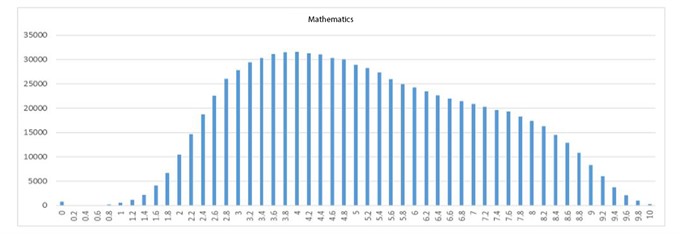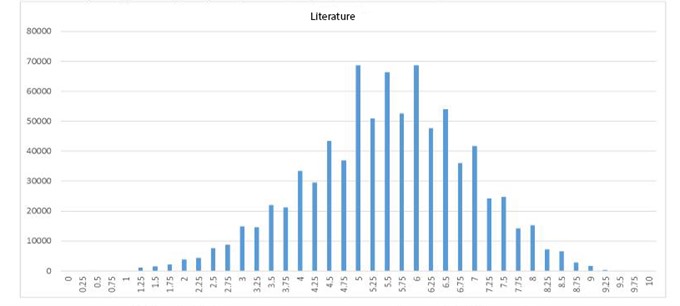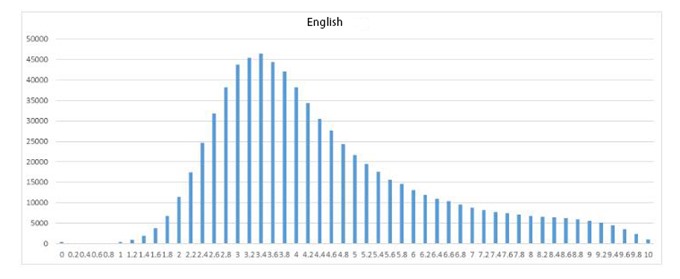

The Education Ministry yesterday defended the surprising surge in the number of perfect scores in the latest national high school examination results saying they were concentrated in traditionally studious areas.
 |
| Distribution of national high school examination scores in 3 compulsory subjects. — Photo courtesy of vietnamnet |
HÀ NỘI — The Education Ministry yesterday defended the surprising surge in the number of perfect scores in the latest national high school examination results saying they were concentrated in traditionally studious areas.
It also pointed out that the surge in perfect scores was accompanied by an increase in the number below par scores of zero and 1.
These explanations were contained as the ministry released official statistics and its analyses of the national high school examinations held last month.
Preliminary results in different localities had already been made available over the past several days, prompting the public to air skepticism about the “rain of 10s” – a term some media outlets have used to refer to the surge in the number of perfect scores compared to previous years.

|
According to the MoET, 4,235 students from 63 provinces attained perfect scores, 61 times higher than 2016’s (69).
This “rain of 10s” has coincided with the fact that these are the first results after the Ministry revamped the national examination format, causing many to question whether they accurately reflect the “quality” of the students.
The results, the Ministry claims, show that the tests have “reflected accurately the capacity of students and reduced false results brought about by wild guessing in multiple choice tests.”
Bùi Văn Ga, MoET Deputy Minister, said that this year was the first time the ministry had experimented with its ‘standardisation approach’ in crafting test questions.
“In written formats, this influx of max scores might be alarming, but for a standardised multiple choice test, a high number of perfect scores is really nothing to worry about,” Ga said.

|
In previous years, the multiple choice format was used for subjects like English, Physics, Chemistry and Biology, but there were very few perfect scores. This year’s results could be attributed to the standardisation of test questions, some people said.
Deputy Minister Ga dismissed widespread cheating or fraud as possible cause for this phenomenon.
Doctor Sái Công Hồng, deputy head of the Ministry’s Quality Control Department, said popular opinion that this year’s tests were far too easy was “unfounded.”
Education officials said the sudden surge of high scores would not affect the selection of students by colleges, as the average scores in all subjects were still in the 4-6 range.
On a national scale, despite the education ministry’s push for more vigorous foreign language education, English scores were low, with 68.38 per cent of the students scoring below 5. This was the highest percentage of below 5 scores among all subjects.
996 students scored max points in English, however, making it the second subject with highest number of 10s after Chemistry’s 1521, leaving Geography a distant third with 603.
Literature assumed the last rank with just one 10 score.
850,000 Vietnamese high school students sat the national examination which comprised of three compulsory tests (Mathematics, Literature, and Foreign Language – mostly English) and one test in either natural science (Physics, Chemistry, or Biology) or social science (History, Geography, or Ethics/Civic Education).
The stakes are high in this national examination, as the results decide which tier of university students can go to. This makes the examination period one of the most stressful times for both the students and their parents during the entire 12-year education process.
Hà Nội leads the country in terms of the number of 10s achieved, with 621 students, and HCM City is in second place with 462 students. The distribution of 10s start to decline along the North-South direction, however. The mountainous region in the north and Mekong Delta region in the South shared the two bottom positions with the least number of students able to get perfect scores. — VNS




